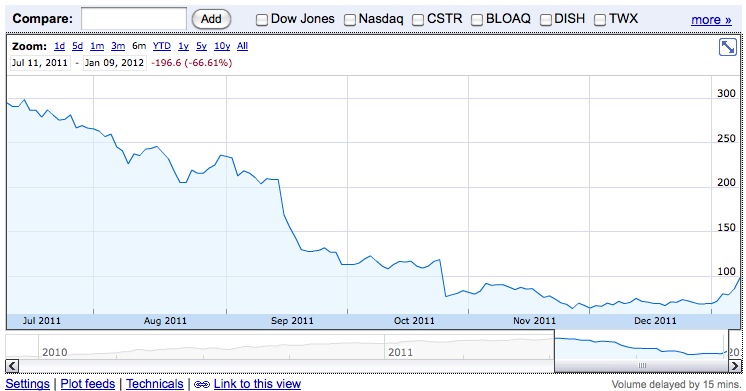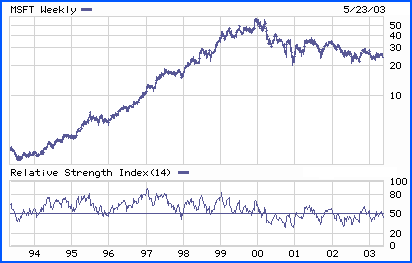EDITORIAL: GW & The Double-edged Sword of Pricing

Hey again everyone, Duke here to fulfill a request of me by one of your own – Pricing and GW.
A few days ago I had an email arrive in my inbox from The Girl, it said that one of the individuals in the comments section was requesting me to write an article on:
- The recent price increase from GW and how it affects their business.
- Why doesn’t GW lower their prices
- What happens if GW starts losing customers based on the price increases
- Can GW fail based off these price increases and what would that look like?
First off I want to say that I love the products GW produces, and I wish nothing more than a long and healthy corporate life that continues to provide me with Grimdark plastic crack for ages. I’ve started my 6 year old on 40k, and would like to have GW still producing great games for us to play into the future.
As far as my qualifications: for the last 10 years I have analyzed companies, and talked to CEOs and investor relations people about their business decisions for a large investment bank. My undergrad was in Business Admin (finance), and I have an MBA in finance and accounting; as well as a series 7, 66, and a CFA. I recently decided to go back and get my CPA, which should be done this July. That said, I am sure I’m not always right, but I just wanted you all to know I’m not talking without background. Even so, please correct me if you find I missed something.
*First a note: The following is a LONG and BORING business article, if you aren’t interested I’ll bold and italicize the short answers.
** Second note: After this discussion you might have feelings of hatred towards capitalism… Sorry.
So, let’s get started shall we?
1. How does the recent price increase affect the GW business model?
To really explain how price increases affect a business we need to first discuss the idea of price elasticity of demand (PEd). Essentially what this indicator tells us is: “How much does a change in price affect a change in demand.” It is calculated in the following way:
- cigarettes: .6 (slowly but surely people will stop smoking if prices go up)
- Beer: .9
- Airline travel: 1.5
- Rice: .55
- Steel: .25
- Medicine .03 (If prices change a lot I will still buy what I need, I don’t want to die)
- Oil .4
- Coca-Cola: 3.8 (If price changes a lot I’ll stop buying, mostly because there are cheap substitutes.)
– (Riley, 2006)
Sales revenues are a combination of (price x consumption). In other words if I sell 100 items at $7 I made $700, but if I raise prices to $10 and now sell 75 items I made $750. I made more money by selling less. Yes, I sold to less people, but as a company I don’t care. The biggest question for any company is: at what point do price increases start losing money?
The second part of pricing comes in the form of Cost. In the corporate world one measurement of the relations of costs to prices is what we call the required rate of return (RRR). This is fairly simple and requires a firm to see what rate of return they need to achieve to overcome the costs associated with the project. Things that go into it are: the cost of financing, new acquisitions (Personnel and assets) required, time required to see a positive return and so forth. It sounds simple, but it can be quite interesting when you consider that the company has many sources of financing (i.e. Debt, Equity, Hybrid, et al.) and limited staff. As such, it is often the case that projects that “make money,” won’t go live or will be priced highly from the beginning simply because they need to make a certain percentage to be an overall profit.
For example: If I said I would give you $100 dollars a month, but you have to borrow against your house at a payment of $120 a month you wouldn’t do it even though you’re “bringing in money.” Now take that example and put in millions of dollars and you have an idea of how companies look at money (and you should too, lol).
SHORT ANSWER: Assuming that GW knows the price elasticity of their product and that the pricing is at such a point that it maximizes Total Revenue, and the Internal rate of return (IRR) on the product is above the RRR; then GW will only serve to make more money and continue producing. If pricing is above the elasticity tipping point, revenues will fall and the company will either have to lower prices or deal with lower revenues. If the IRR of a product ins’t up to snuff then the project will be canceled or the price will be raised to the point where it is above the RRR (Assuming that price increase doesn’t also lower TR through elasticity).
Clear as mud? Good, let’s continue!
2. Why doesn’t GW lower their prices?
This part is all about the equilibrium in PEd, and where GW thinks they are in relation to that equilibrium. Where they are in relation to the PEd Equilibrium is more important than how elastic/inelastic the company is (at least in relation to this discussion).
Well, as we covered before, it depends on their elasticity (or inelasticity). As long as you are below the PEd equilibrium (The point where demand and pricing are maximizing Total Revue) then you have no reason to lower prices because the added demand won’t raise your total revenue as fast as price increases will. If, however, you are priced at equilibrium you will only lower prices if the demand falls. Obviously if you are above equilibrium then you have to lower prices or create more demand some other way (Apocalypse anyone?). The only other reason a company usually lowers prices is to gain market share or goodwill. Goodwill is essentially what it sounds like, it is used to express the intangible (but very real) value of a company beyond the physical assets. For example, how a company makes you feel when interacting with them has value. So, if they lower prices they are trying to gain favor from you and generate little happy feelings which make you like the company more, and are thus, you’re more likely to continue being a customer. So lets go over reasons GW would lower prices and talk about the validity of each scenario:
- Costs have fallen and you’re passing along the savings – Companies usually only do this to gain goodwill. Most companies will not lower prices if they can get away with keeping prices the same or higher with lower ‘cost of goods sold,’ (COGS). GW will not do this, why make less money? Shareholders don’t like that. Also, GW feels that it is in a monopolistic setting and in that view it doesn’t see any benefit in this.
- Prices are above the equilibrium point – Very real, it feels like GW is pushing the limits of the product elasticity, time will tell. If they are above it we might see ‘package deals,’ and small price decreases to test the market and reaffirm the elasticity equilibrium point.
- Gain Market Share – Price wars usually happen to gain market share. GW feels very comfortable with their place in the miniature wargaming market so this will not happen.
- Gain goodwill with the customer base – Though they should probably make some sort of gesture of goodwill to the player base (Because it feels like they are losing goodwill) I don’t believe they will do this, or that they should do this with pricing. There are many other ways to gain goodwill without lowering prices. That said, I would personally give them a lot of goodwill if they did 😉
Well, as we discussed earlier, losing customers doesn’t mean losing money. I know, you’re blown away. How do you make money losing customers. Let’s discuss.
Here is a very, very simplified example:
Assume I sell soda cans at $1.50 each but I had to buy a 12 pack for $15. Some people would run this equation: $15/12 = $1.25/ can cost They would then do this: $1.5 (can sale price)-1.25(can cost) = $.25 profit per can. If they then sold 2 cans they would state “I made $.50 today!” They would be wrong. Though they did make a few sales if the day ended like that the equation would look like this: 1.5(Sale price) X 2(sales)= $3 in sales – $15 (Cost of goods) = -$12 loss for the day.
By selling just 2 cans you lose $12. So, at what point do you actually start breaking even? Soda #10! ((10 sales x $1.50 price) – $15 cost) = $0 (break-even). So this is only profitable if you sell soda cans #11 and #12. Your maximum profit on one case is $3 only after customers 11 and 12. All the other customers COST you money to have. The worst customer is #13 because now you have to go spend another $15 for a second 12 pack bringing the equation to ((13sales x 1.5) – $30 Cost) = –10.5 dollars. So, you don’t actually want customer 13 because you just went from a profit of $3 to a loss of $10. This is why it is so very very important to get pricing just right (And also why we started talking about PEd.)
So, getting more customers isn’t a bad thing if you hit those vital numbers like in the example. You want more customers, but only in the increments that are most profitable, and sometimes you can’t hit the next increment because it would lower your total revenue based on PEd.
starting to make sense now isn’t it? No? well, crap.
Short answer: If they are below equilibrium they actually want to lose customers because it will increase total revenues. So go ahead and complain, go buy something else because if they are below equilibrium then your business is losing them money (told you that you would hate capitalism). HOWEVER, if they are at or above equilibrium then it will crush the company under the weight of it’s own costs. In this event you will see prices lowered quickly and out of schedule, as well as other schemes to increase demand again.
What would it look like if they did begin to fail? Well, most companies when they find they have raised prices too high will usually do a 180 and lower prices to a point where they feel they are back at equilibrium. If this doesn’t happen quickly then the company will lose more customers than they can afford and the ones remaining will lose a lot of good will. They will also not regain those customers who left (usually).
At this point the company has two paths:
Option 1: They tank and struggle to survive, there is a lot of money lost and there is severe threat of being bought out by a bigger firm. You may also have other going concerns (A going concern is a concern that the company won’t be able to continue…)
Here is an example of this from Netflix (NFLX). Look at the stock price free fall. Also realize that Netflix announced the price increase in July- August 2011. The stock just tumbled from that point forward from a high of around 280 to a current price of about 64. Not that Netflix will go out of business, but I wouldn’t want to be CEO at that time.
– Source- (Yarow, 2012)
Option 2: The company doesn’t tank into the ground, but instead they go about business as piece of their former glory. They never quite demand the loyalty they did before and other competitors enter into the market that steal their thunder. This is shown pretty clearly by the Microsoft (MFST) stock price.
– Source (Unavailable)
Needless to say when a company starts to die it typically doesn’t raise prices, it will usually lower them. Eventually they will lower them to a point where they cannot sustain the business and will close their doors. For GW it would need to stop paying a dividend to it’s shareholders before it started to show signs of failure. Now, the hard part of business is that all of these aren’t necessarily a sign of failure and by their own can be a sign of growth and strength. For example, a company can stop paying a dividend because they have a great business idea that needs extra capital and they will make billions. But these are a few good indicators when all present at the same time…
Signs of the fall:
1. New ‘odd,’ business lines
2. Price decreases that are out of schedule
3. Dividend stops getting paid.
In conclusion, I hope GW hasn’t gone too far in their price increases. I know we all keenly feel the sharp pain of any price increase and the people that are ‘known losses,’ to a business are our friends and mates. Whether you hate GK or think the Citadel paint line is second rate we can all agree that we would love nothing more than the company to be able to continue producing some of the best miniatures in the world, with a game system that we enjoy. That said, GW, please keep our pocket books in mind!
What are your thoughts on the Business side of things?
Ps- I hope you’re all still awake, apologies for grammar mistakes and the wall of text 🙂
– Riley, G. (2006, Sept 09). As markets and market systems. Retrieved from http://tutor2u.net/economics/revision-notes/as-markets-price-elasticity-of-demand.html
– Yarow, J. (2012, Jan 09). Netflix stockis soaring today. Retrieved from http://www.businessinsider.com/netflix-stock-2012-1







